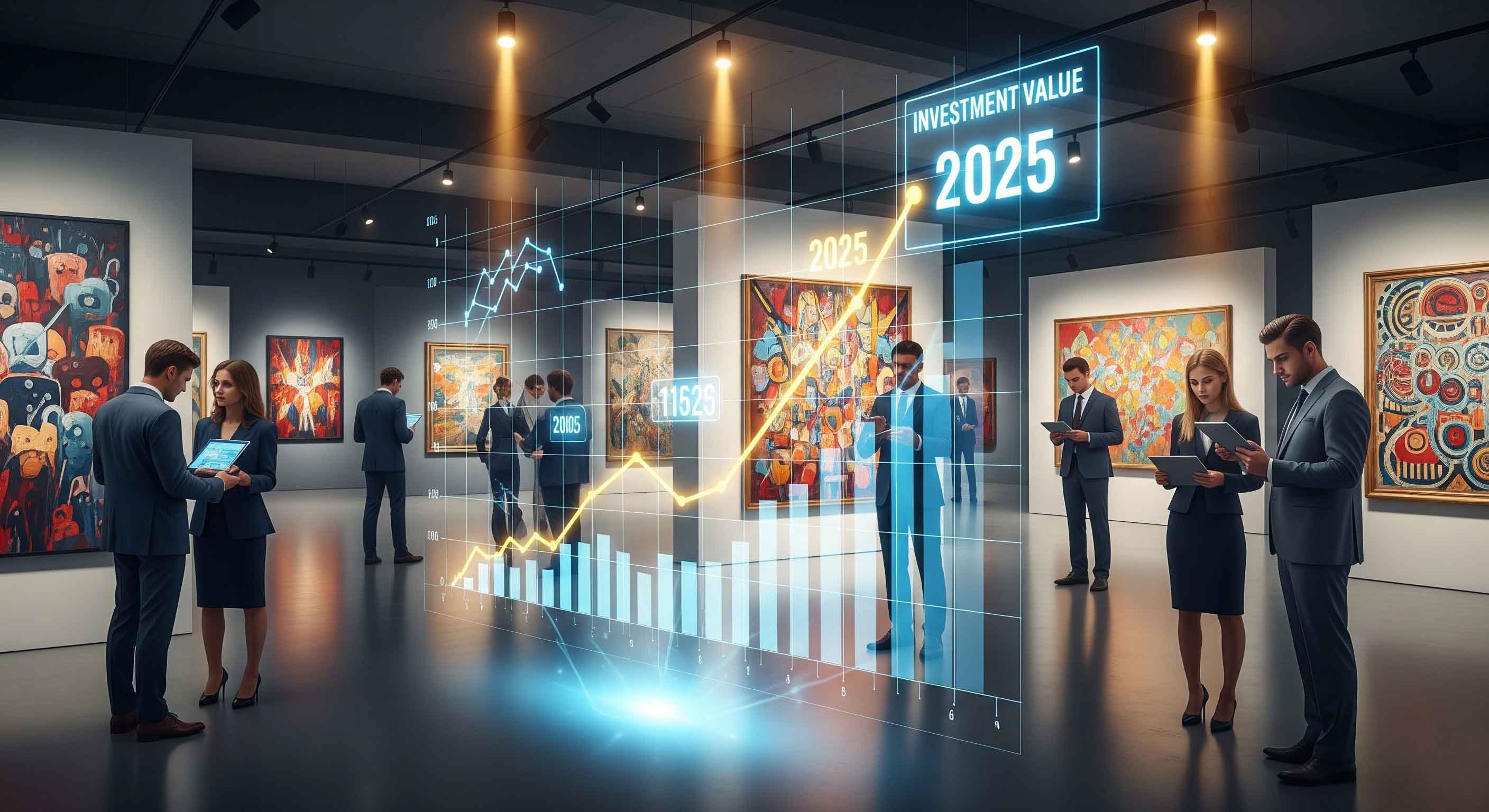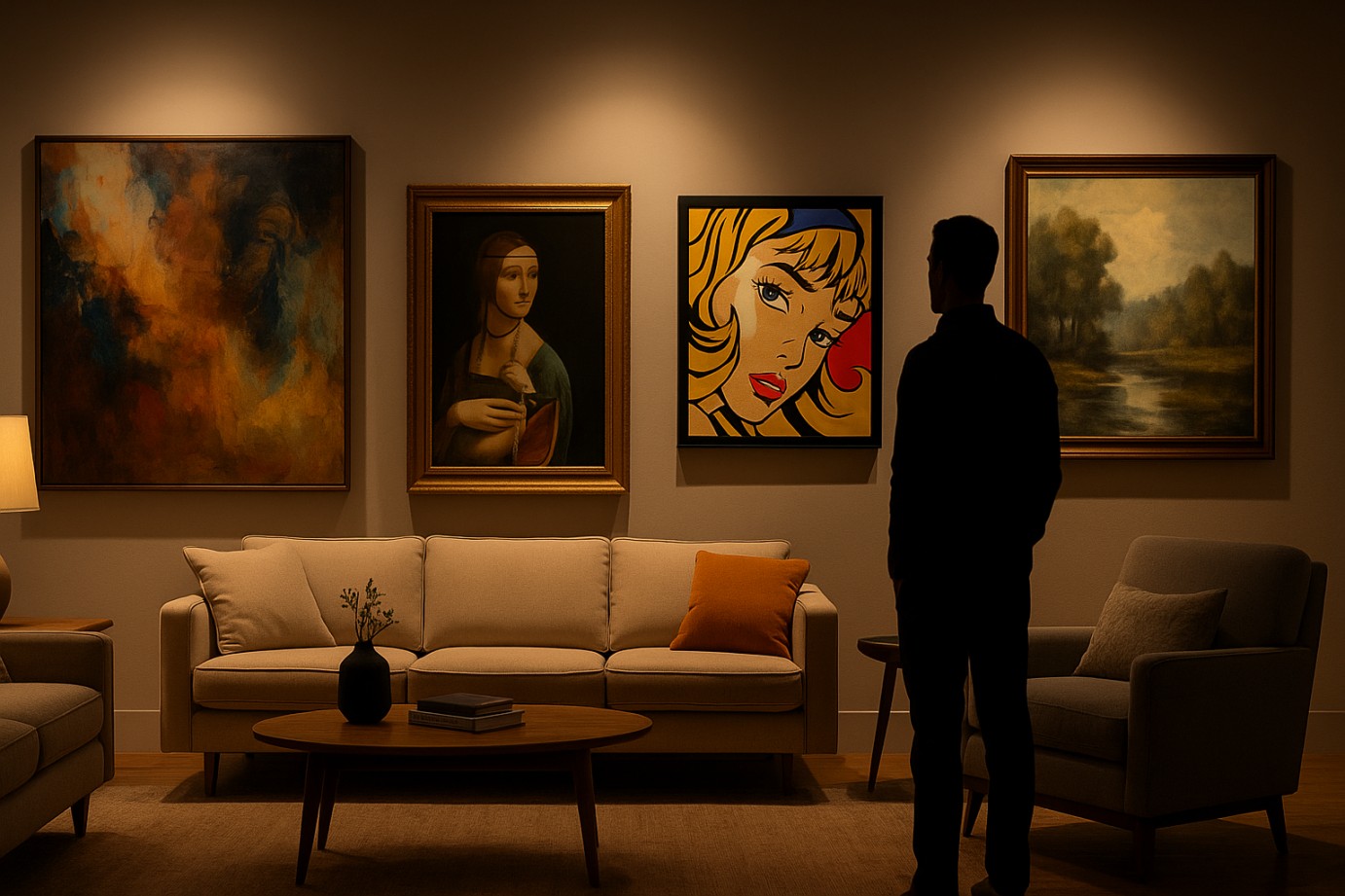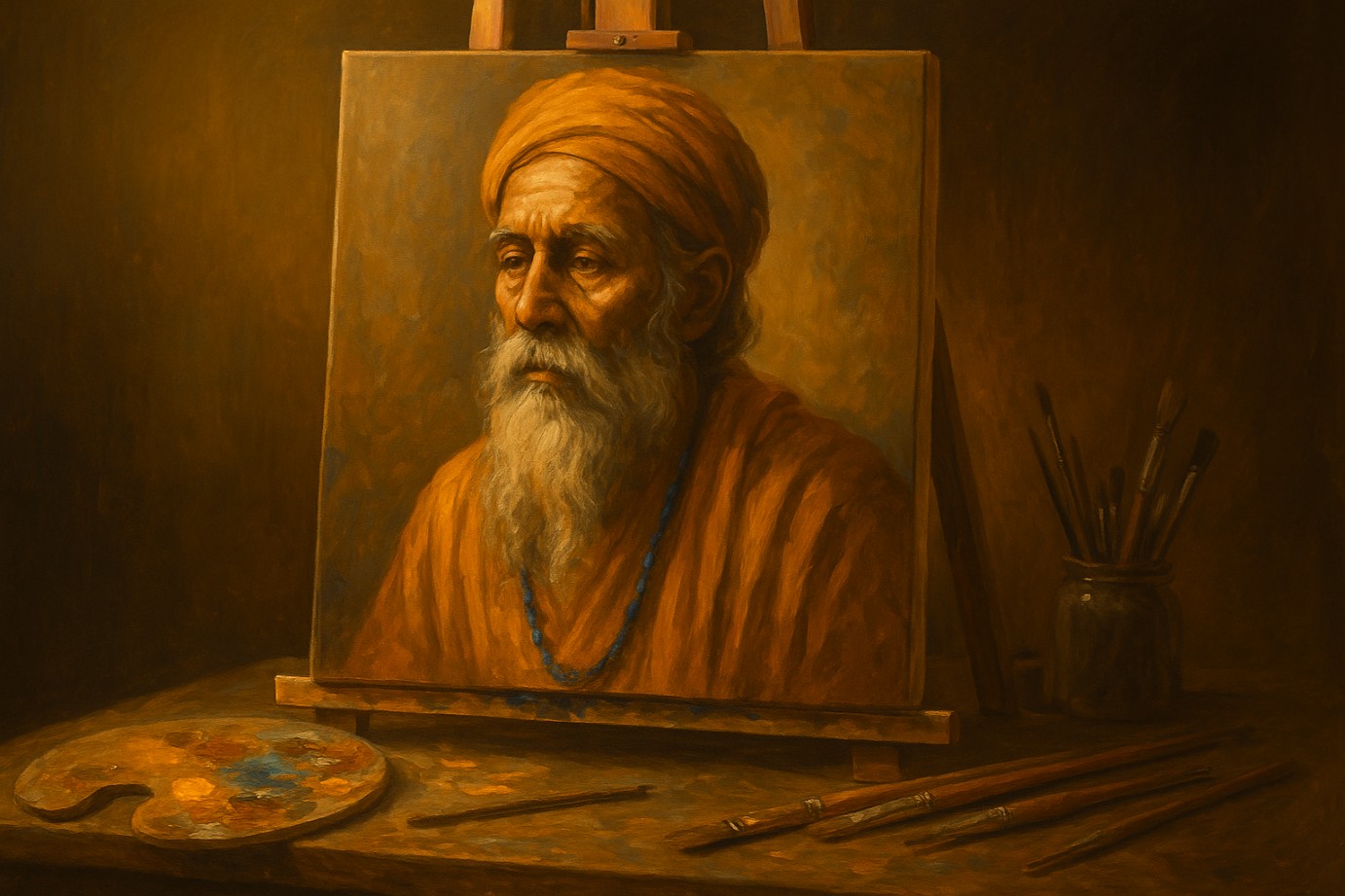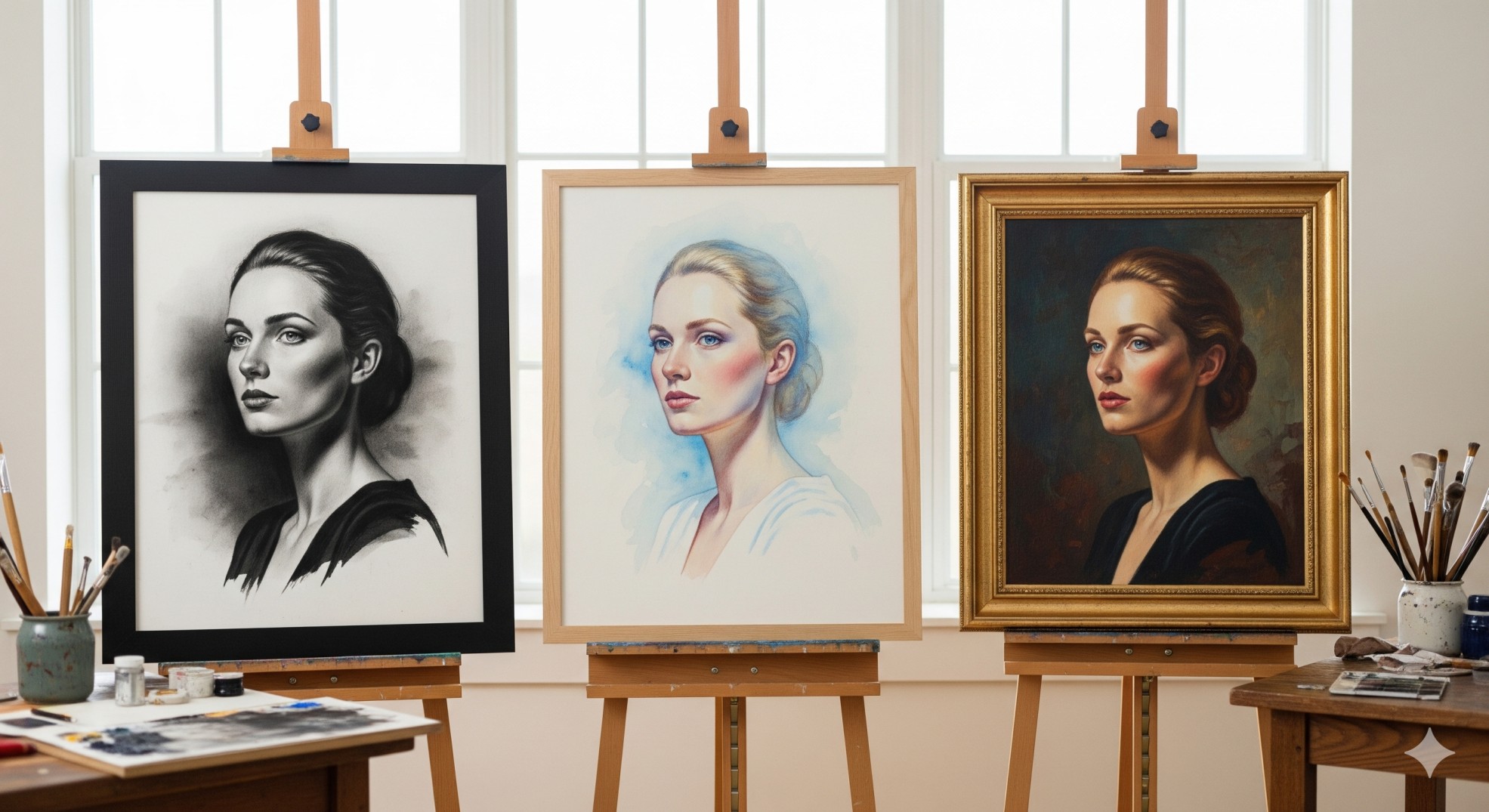The art market has reached unprecedented heights, with 2024 seeing record-breaking sales and institutional investment reaching $65 billion globally. As we enter 2025, sophisticated investors are increasingly recognizing original artwork not just as aesthetic objects, but as a distinct asset class offering unique benefits unavailable through traditional investments. While fractional art ownership platforms and print markets have gained attention, the case for investing directly in original artwork has never been stronger.
The convergence of several market forces makes 2025 a particularly compelling time for art investment. Ultra-high-net-worth individuals have allocated over $2 trillion globally to art and collectibles, according to Deloitte’s latest Art & Finance Report. Simultaneously, technological advances in authentication, market transparency, and global accessibility are creating new opportunities for serious collectors to build meaningful portfolios.
Unlike stocks, bonds, or even real estate, original artwork offers what economists call “dual utility”—the capacity to provide both financial returns and personal satisfaction. This unique characteristic, combined with art’s historically low correlation to traditional markets and superior long-term appreciation rates, positions original art as an increasingly important component of diversified wealth management strategies.
The following five reasons demonstrate why 2025 represents an optimal entry point for investing in original artwork, offering insights into market dynamics, financial benefits, and practical implementation strategies for building a collection that serves both portfolio diversification and personal enrichment goals.
Reason 1: Portfolio Diversification and Low Market Correlation
The most compelling financial argument for original art investment lies in its remarkable independence from traditional market cycles. Academic research consistently demonstrates that fine art exhibits near-zero correlation with stock markets, bonds, and even real estate, making it one of the most effective diversification tools available to sophisticated investors.
Statistical Evidence of Market Independence
The Artprice Global Index, tracking blue-chip artworks over the past 25 years, shows a correlation coefficient of just 0.12 with the S&P 500—indicating that art prices move almost entirely independently of stock market fluctuations. During the 2008 financial crisis, while the S&P 500 declined 37%, the contemporary art market dropped only 7% and recovered to new highs within 18 months. Similarly, during the COVID-19 market volatility of 2020, contemporary art actually appreciated 15.1% while global equity markets experienced extreme turbulence.
This independence stems from art’s unique demand drivers. While stock prices respond to earnings reports, interest rates, and economic indicators, art values are influenced by cultural trends, collector preferences, institutional acquisition strategies, and the wealth accumulation of ultra-high-net-worth individuals—factors that often move counter-cyclically to broader economic conditions.
Practical Portfolio Integration Strategies
Financial advisors specializing in alternative investments typically recommend allocating 5-15% of investable assets to art and collectibles, with the specific percentage depending on risk tolerance, liquidity needs, and personal interest level. For a $2 million portfolio, this might translate to $100,000-$300,000 in original artwork—sufficient to acquire several significant pieces or focus on works by a select group of emerging or mid-career artists.
The key to effective art diversification lies in understanding that not all art provides equal portfolio benefits. Contemporary works by living artists often show higher volatility but greater growth potential, while established modern masters provide stability and prestige. Geographic diversification also matters—collecting works from different cultural markets (American, European, Asian) can further reduce correlation risks while capitalizing on regional economic growth patterns.
Case Studies in Successful Diversification
Consider the portfolio performance of collector Steven Cohen, whose collection of post-war and contemporary art has consistently outperformed his hedge fund returns over two decades. His strategic focus on artists like Willem de Kooning, Jeff Koons, and Damien Hirst has provided both aesthetic satisfaction and significant capital appreciation, with some pieces appreciating 400-600% over ten-year holding periods.
Similarly, the Broad Collection demonstrates how systematic collecting can create both cultural impact and financial value. Eli and Edythe Broad’s focus on post-war contemporary art, assembled over 50 years, now represents over $2 billion in value while providing ongoing cultural legacy through their museum in Los Angeles.
Reason 2: Inflation Hedging and Wealth Preservation
Original artwork has historically provided superior protection against inflation and currency devaluation, making it particularly valuable in the current economic environment where concerns about monetary policy and government debt levels drive investors toward tangible assets.
Historical Performance During Inflationary Periods
Analysis of art market performance during inflationary periods reveals consistently strong results. During the high-inflation 1970s, when consumer prices rose 7.4% annually, quality artworks appreciated at an average rate of 12.6% per year. The art market’s performance during recent inflationary pressures has been similarly impressive—in 2021-2022, as inflation reached 40-year highs, blue-chip contemporary art continued appreciating at double-digit rates.
This inflation-beating performance stems from several factors. First, art represents real, tangible value that cannot be diluted through monetary policy. Second, the global wealthy class—art’s primary market—often increases spending on luxury assets during inflationary periods as a hedge against currency devaluation. Third, the fixed supply of authentic original works creates natural scarcity that supports value retention.
Comparison with Traditional Inflation Hedges
While gold has long been considered the classic inflation hedge, delivering average annual returns of 7.8% during inflationary periods, art has significantly outperformed this benchmark. Real estate, another traditional hedge, faces challenges from rising interest rates and regulatory changes that don’t affect art markets. Art also offers advantages over inflation-protected securities (TIPS), which provide inflation protection but limited upside potential.
The table below illustrates comparative performance during recent inflationary periods:
- Contemporary Art (2020-2024): +18.3% annually
- Gold (2020-2024): +8.1% annually
- Real Estate (2020-2024): +12.4% annually
- TIPS (2020-2024): +4.7% annually
- S&P 500 (2020-2024): +11.2% annually
Tangible Asset Advantages in Economic Uncertainty
Beyond numerical performance, original artwork provides psychological benefits during uncertain times. Unlike digital assets or paper investments, art offers tangible, physical ownership that can be enjoyed daily. This “utility value” provides comfort during market volatility while maintaining investment potential.
The global nature of art markets also provides geographic diversification benefits. A collector in the United States owns assets that can be appreciated by buyers worldwide, reducing dependence on any single economy’s performance. Major auction houses report that over 40% of high-value art transactions now involve international buyers, creating truly global markets that transcend individual country economic cycles.
Reason 3: Cultural Capital and Social Status
While financial returns provide the quantitative case for art investment, the social and cultural benefits create additional value that traditional investments cannot match. This “cultural capital” translates into tangible business and personal advantages that sophisticated investors increasingly recognize as important wealth management components.
The Concept of Cultural Capital
Sociologist Pierre Bourdieu’s research on cultural capital demonstrates how aesthetic knowledge and refined taste translate into social advantages, business opportunities, and enhanced quality of life. Art collectors gain access to exclusive social networks, cultural institutions, and business relationships that can provide value far exceeding the monetary cost of their collections.
Modern neuroscience research supports these benefits, showing that regular exposure to high-quality art stimulates creative thinking, reduces stress, and enhances cognitive function. For business leaders and entrepreneurs, these mental health benefits can improve decision-making and leadership effectiveness in measurable ways.
Networking and Business Advantages
Art collecting provides unique networking opportunities unavailable through traditional business channels. Gallery openings, museum events, art fairs, and collector gatherings create environments where business relationships develop naturally around shared aesthetic interests. Many successful business deals have originated in gallery spaces where the relaxed, cultured atmosphere facilitates genuine relationship building.
Consider the annual Art Basel events, which attract not only art enthusiasts but also business leaders, celebrities, and cultural influencers from around the world. Collectors report that their art interests have opened doors to investment opportunities, business partnerships, and social connections that would have been difficult to establish through conventional networking.
Legacy Building and Generational Wealth Transfer
Original artwork provides unique advantages for estate planning and generational wealth transfer. Unlike financial assets that can seem abstract to heirs, art creates emotional connections that help preserve family wealth across generations. The stories behind acquisitions, relationships with artists, and cultural significance of pieces create meaning that encourages preservation rather than liquidation.
Many wealthy families use art collections as tools for teaching values, cultural appreciation, and stewardship to younger generations. The Rockefeller family’s art collecting tradition, spanning over a century, demonstrates how collections can serve as both financial assets and cultural education tools that strengthen family bonds and shared identity.
Converting Cultural Capital to Business Opportunities
The cultural capital gained through serious art collecting often translates directly into business advantages. Art collectors frequently report enhanced credibility when dealing with luxury brands, high-net-worth clients, and international business partners who view aesthetic sophistication as an indicator of overall business acumen.
Real estate developers, for instance, often find that their art collections help in marketing luxury properties to culturally sophisticated buyers. Business consultants report that displaying quality artwork in offices and meeting spaces enhances client perception and facilitates relationship building with executive-level decision makers.
Reason 4: Market Trends Favoring Original Art in 2025
Several converging market trends make 2025 particularly favorable for original art investment, from technological innovations improving market transparency to demographic shifts driving demand growth across multiple geographic regions.
Current Art Market Analysis and Growth Drivers
The global art market has shown remarkable resilience, with total sales reaching $67.8 billion in 2024 according to the latest Art Basel and UBS Global Art Market Report. More significantly, the market structure is evolving in ways that favor serious collectors of original works over casual buyers of prints or fractional ownership shares.
Online art sales have stabilized at approximately 25% of total market volume, creating new transparency and accessibility while maintaining the premium values associated with original works. Digital platforms now provide comprehensive price databases, auction result tracking, and provenance verification that reduce information asymmetries and support more efficient price discovery.
The emergence of professional art advisory services has also matured the market, with over 1,200 certified art advisors now serving collectors globally. This professionalization helps new collectors navigate acquisition, authentication, and valuation processes that previously required decades of experience to master effectively.
Technology’s Impact on Authentication and Market Efficiency
Blockchain technology and AI-powered authentication tools are revolutionizing art market infrastructure in ways that particularly benefit original artwork. Digital certificates of authenticity, immutable provenance records, and AI-assisted attribution analysis reduce fraud risks while increasing confidence in original works.
Companies like Verisart and Codex Protocol are creating permanent digital records for physical artworks, while AI systems developed by firms like Thread Genius can analyze brushstrokes, color palettes, and compositional elements to verify authenticity with 95%+ accuracy rates. These technological advances disproportionately benefit original art markets, as prints and reproductions gain less value from authentication advances.
Virtual and augmented reality technologies also allow collectors to preview artworks in their spaces before purchase, reducing uncertainty and enabling more confident acquisition decisions. Museums are using VR to create immersive exhibitions that increase art appreciation and drive collecting interest among younger demographics.
Demographic Shifts Driving Market Expansion
Millennials now represent the fastest-growing segment of art collectors, with their purchasing power expected to peak in the 2025-2035 period. This generation brings different collecting preferences—favoring contemporary works, diverse artists, and socially conscious art—while maintaining strong appreciation for original pieces over reproductions.
Asian markets continue expanding, with Chinese buyers alone representing 20% of global art purchases. The growth of wealth in India, Southeast Asia, and the Middle East creates new demand sources that support price appreciation for quality original works. These emerging markets show strong preferences for original artwork over prints or digital alternatives.
Women now represent 58% of art purchases by value, according to recent Art Basel data, bringing different aesthetic preferences and collecting strategies that often favor original works by underrepresented artists—creating new appreciation opportunities in previously overlooked market segments.
Original Art vs. Digital and Fractional Alternatives
While digital art and fractional ownership platforms have gained media attention, market data reveals continued preference for physical, original artworks among serious collectors. NFT markets have declined 95% from their 2021-2022 peaks, while original contemporary art continues setting auction records.
Fractional ownership platforms like Masterworks, while providing market access, charge management fees of 1.5% annually plus 20% of profits—significantly reducing net returns compared to direct ownership. These platforms also limit collector control over timing of sales and provide no physical enjoyment of the artworks.
Physical original art provides immediate possession, emotional satisfaction, daily utility, and complete control over timing of potential sales. These advantages become more valuable as collectors gain experience and sophistication in their approach to art as both investment and lifestyle enhancement.
Reason 5: Superior Long-Term Appreciation Potential
Historical performance data and current market analysis indicate that carefully selected original artworks offer superior long-term appreciation potential compared to most traditional asset classes, with the added benefit of providing ongoing personal satisfaction throughout the holding period.
Historical Performance Analysis
The Artprice100 Index, tracking elite artists over the past two decades, has delivered average annual returns of 8.9%, significantly outperforming bonds (4.2%) and matching or exceeding stock market returns while providing much lower volatility. More impressive are the returns achieved by collectors who focus on emerging and mid-career artists before they reach full market recognition.
Contemporary artists who entered the secondary market in the 2000s have shown particularly strong performance. Kerry James Marshall’s paintings, which sold for $25,000-$50,000 in 2005, now regularly command $5-15 million at auction—representing compound annual growth rates of 35-40%. Similarly, works by Kehinde Wiley, purchased for $30,000-$80,000 in the early 2010s, now sell for $500,000-$2 million.
These exceptional returns are possible because art markets remain less efficient than stock markets. Information asymmetries, limited market participants, and the subjective nature of aesthetic valuation create opportunities for knowledgeable collectors to identify undervalued artists and movements before broader market recognition drives prices higher.
Factors Driving Appreciation: Scarcity and Provenance
Unlike financial assets that can be created indefinitely, original artworks exist in fixed supply. When an artist dies, no new authentic works can ever be created, making existing pieces increasingly scarce as demand grows. This fundamental scarcity dynamic supports long-term value appreciation in ways impossible for most other investments.
Provenance—the ownership history of an artwork—also drives value appreciation over time. Pieces with distinguished exhibition histories, museum-quality provenance, or association with important collections often appreciate faster than works without such credentials. Building provenance through careful conservation, strategic lending to exhibitions, and documentation enhances both current value and future appreciation potential.
The global expansion of museums and cultural institutions creates ongoing demand for significant artworks. Major cities worldwide are building new contemporary art museums, while existing institutions compete for important works to enhance their collections. This institutional demand provides a floor for prices of museum-quality pieces while driving appreciation for works that meet institutional collecting standards.
Emerging Market Opportunities and Undervalued Segments
Several market segments currently offer particular appreciation potential for informed collectors. Works by women artists and artists of color, historically undervalued by traditional markets, are experiencing rapid recognition and price appreciation as institutions and collectors work to address historical imbalances.
Photography as a fine art medium continues gaining recognition, with works by masters like Andreas Gursky, Cindy Sherman, and Thomas Struth showing strong appreciation while remaining more accessible than paintings by artists of similar stature. Limited edition photographs offer the scarcity benefits of original art while often being priced below comparable paintings.
Regional markets also present opportunities. Latin American contemporary art, particularly works by artists from Mexico, Brazil, and Colombia, shows strong appreciation potential as these economies grow and develop sophisticated collector bases. African contemporary art represents another emerging opportunity, with works by artists like El Anatsui and Kehinde Wiley gaining international recognition.
Market Inefficiencies Creating Investment Opportunities
Art markets remain less efficient than stock markets, creating opportunities for knowledgeable collectors to identify value before it’s recognized by broader markets. These inefficiencies exist for several reasons: limited information sharing, subjective valuation methods, emotional decision-making, and the relatively small number of market participants compared to financial markets.
Successful art investors develop expertise in specific areas—whether contemporary painting, photography, sculpture, or works from particular geographic regions—allowing them to recognize quality and value before general market recognition. This specialization approach has proven more successful than attempting to collect broadly across all categories and time periods.
The timing of market recognition for individual artists or movements can also create opportunities. Artists may produce their best work years before achieving commercial success, creating windows where exceptional pieces can be acquired at relatively modest prices. Understanding career development patterns and institutional recognition processes helps collectors identify these opportunities.
Implementation Strategy: How to Start Investing in Original Art
Converting the theoretical case for art investment into practical action requires a systematic approach that balances financial objectives with personal aesthetic preferences while managing the unique risks associated with art markets.
Budget Planning and Portfolio Allocation Guidelines
Financial advisors specializing in alternative investments typically recommend starting with 5-10% portfolio allocation to art and collectibles, with the option to increase to 15-20% as experience and comfort levels grow. For most serious collectors, this translates to an initial investment of $50,000-$200,000, sufficient to acquire several meaningful pieces or focus on works by one or two carefully selected artists.
The key is establishing a collecting budget separate from emergency funds and core investment portfolios. Art should be purchased with funds that won’t be needed for at least 5-10 years, as art markets can experience short-term volatility and liquidation may take time. Many successful collectors establish annual art budgets of $25,000-$100,000, allowing for systematic collection building over time.
Consider starting with works in the $10,000-$50,000 range, which provides access to quality pieces by emerging and mid-career artists while allowing for diversification across multiple works. As knowledge and confidence grow, collectors often graduate to more significant pieces while maintaining some allocation to emerging talent discovery.
Due Diligence Processes for Art Acquisition
Successful art acquisition requires systematic research processes covering artist background, market performance, condition assessment, and provenance verification. Begin by researching the artist’s exhibition history, critical reception, museum collections that include their work, and recent auction results for comparable pieces.
Provenance research involves verifying ownership history, exhibition records, and publication history. Reputable galleries and auction houses provide detailed condition reports and provenance documentation, but independent verification through databases like the Art Loss Register helps ensure pieces aren’t stolen or fraudulent.
Physical condition assessment requires expert evaluation, particularly for older works or pieces that may have been improperly stored. Professional conservators can identify restoration work, damage, or condition issues that might affect both value and future preservation costs. Factor conservation and framing costs into acquisition budgets, as proper presentation and preservation are essential for maintaining value.
Working with Galleries, Dealers, and Auction Houses
Building relationships with reputable galleries and dealers provides access to better works, market information, and professional guidance. Established galleries typically offer payment plans, authentication guarantees, and ongoing support for their artists’ markets. They also provide valuable education about emerging artists and market trends.
Auction houses offer access to secondary market works and provide transparent pricing through public bidding processes. However, auction purchases include buyer’s premiums of 10-25% and provide limited recourse for condition or attribution issues. Auctions work best for collectors with significant experience and specific acquisition targets.
Private dealers and art advisors can provide access to works not available through galleries or auctions, particularly pieces being sold discretely by collectors or estates. Established advisors charge fees of 10-20% but can save money by negotiating better prices and avoiding inferior pieces.
Authentication, Insurance, and Storage Considerations
Professional authentication by recognized experts prevents costly mistakes and ensures investment-grade quality. For significant purchases, consider obtaining multiple expert opinions, particularly for works by artists with active forgery markets. Authentication costs typically range from $1,000-$10,000 depending on the artist and complexity of research required.
Specialized art insurance protects against theft, damage, and loss while providing professional conservation services when needed. Annual premiums typically cost 0.1-0.3% of appraised value, with higher rates for works displayed in high-risk locations. Many insurers require professional appraisals every 3-5 years to maintain coverage.
Climate-controlled storage becomes important for collectors with multiple works or pieces not currently displayed. Professional art storage facilities provide security, climate control, and handling services for $100-$500 annually per piece, depending on size and location. Home display requires attention to lighting, humidity, and security to preserve both value and enjoyment.
Risk Management and Market Considerations
While art offers compelling investment benefits, success requires understanding and managing the unique risks associated with art markets, from authentication challenges to liquidity constraints and market volatility.
Understanding Art Market Risks and Volatility
Art markets can experience significant volatility, particularly for contemporary works by living artists whose market recognition may fluctuate based on critical reception, gallery representation changes, or broader cultural trends. Works by deceased artists typically show more stability but can still experience price swings based on market conditions and collector preferences.
Attribution risks affect older works where scholarship may evolve over time. A painting attributed to a major artist but later determined to be from their workshop or a follower can lose 70-90% of its value. Even temporary attribution questions can significantly impact marketability and pricing.
Market concentration risks arise when collecting too narrowly. Artists, movements, or geographic regions can fall out of favor, affecting entire segments simultaneously. Diversification across time periods, styles, and price points helps mitigate these risks while providing broader cultural education and enjoyment.
Liquidity Considerations and Exit Strategies
Art markets are inherently illiquid compared to financial markets. Selling significant works may take 6-18 months and involve substantial transaction costs of 10-30% including auction house commissions, insurance, and marketing expenses. This illiquidity requires careful cash flow planning and conservative leverage usage.
However, illiquidity also provides benefits by preventing impulsive selling during temporary market downturns. Many of the best art investment returns come from long-term holding through multiple market cycles. The inability to check daily prices and trade impulsively often leads to better long-term outcomes than more liquid investments.
Estate planning requires special attention for art collections, as inheritance taxes on art can be substantial and immediate. Many collectors use charitable giving strategies, museum donations, or family limited partnerships to manage estate tax liabilities while preserving collections for future generations.
Market Cycles and Timing Considerations
Art markets experience cycles somewhat independent of broader economic cycles, but understanding these patterns can improve acquisition timing. Economic downturns often create acquisition opportunities as some collectors face liquidity pressures, while periods of wealth expansion drive competitive bidding and higher prices.
The best acquisition opportunities often occur during periods of market uncertainty when fewer collectors are actively bidding. Conversely, selling often works best during periods of economic expansion when wealth creation drives art market activity and prices.
Seasonal patterns also affect art markets, with major auction seasons in spring and fall typically offering the best selection but highest competition. Summer and winter often provide better negotiating opportunities with galleries and private sellers.
Professional Guidance and Advisory Services
Given the complexity and risks involved in art investment, working with qualified professionals often improves outcomes for serious collectors. Art advisors, typically charging 10-20% of purchase prices, provide market knowledge, negotiation skills, and access to works not available to individual collectors.
Professional appraisers provide valuation services for insurance, estate planning, and potential sale preparation. Certified appraisers should hold credentials from recognized organizations like the American Society of Appraisers or International Society of Appraisers.
Legal counsel specializing in art transactions helps with complex purchases, authenticity disputes, and estate planning. Art law specialists understand the unique legal issues affecting art ownership, including moral rights, resale rights, and cultural property regulations.
Conclusion: Seizing the 2025 Art Investment Opportunity
The convergence of favorable market conditions, technological advances, and demographic trends makes 2025 an exceptional year for beginning or expanding art investment activities. Original artwork offers a unique combination of portfolio diversification, inflation protection, cultural capital, and personal satisfaction unavailable through traditional investment vehicles.
The five reasons outlined—portfolio diversification benefits, inflation hedging capabilities, cultural capital advantages, favorable market trends, and superior appreciation potential—demonstrate why sophisticated investors increasingly view original art as an essential component of comprehensive wealth management strategies. The key lies in approaching art investment with the same rigor and professional guidance applied to other significant financial decisions.
Starting with modest allocations and building expertise over time allows investors to participate in this remarkable asset class while managing risks and developing the knowledge necessary for long-term success. The art market’s inefficiencies and subjective nature create opportunities for informed collectors to achieve exceptional returns while building collections that provide decades of personal enjoyment and cultural enrichment.
As we progress through 2025, the investors who recognize art’s unique value proposition and begin building carefully curated collections today will likely look back on this period as a pivotal moment in their wealth-building journey. The combination of financial opportunity and personal satisfaction makes original art investment not just a smart financial decision, but a pathway to a richer, more culturally engaged life.
The time to begin is now. With proper planning, professional guidance, and a commitment to learning, art investment can transform both your portfolio and your life in ways that purely financial investments never could. The masterpieces of tomorrow are being created today—and the collectors who recognize and acquire them now will reap both financial and cultural rewards for decades to come.




